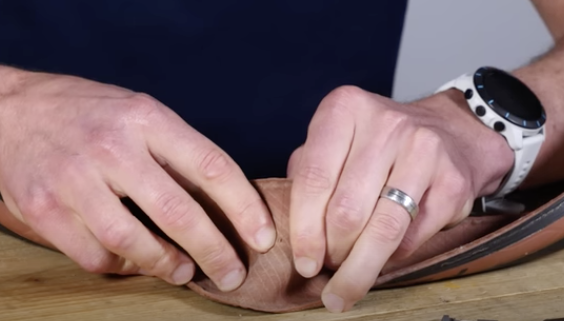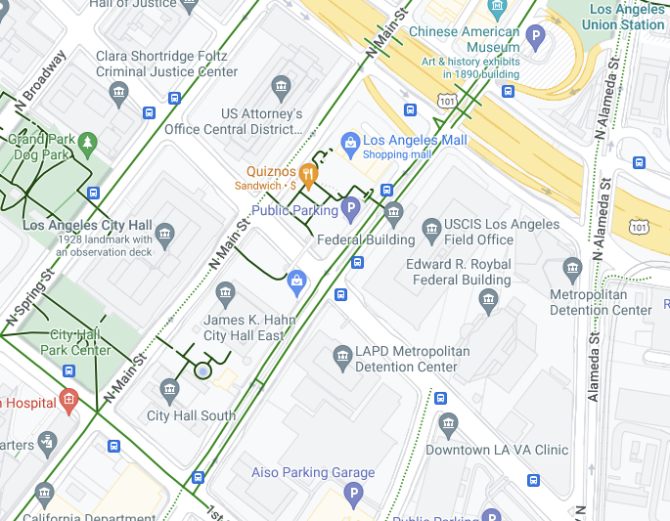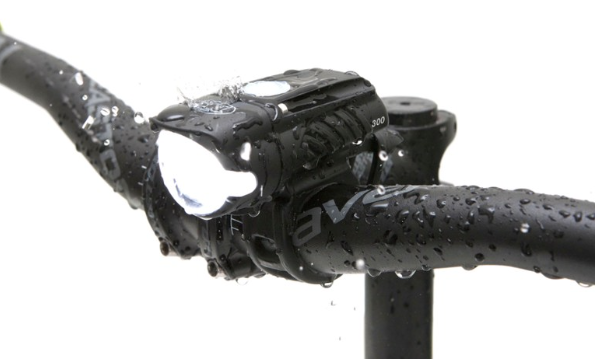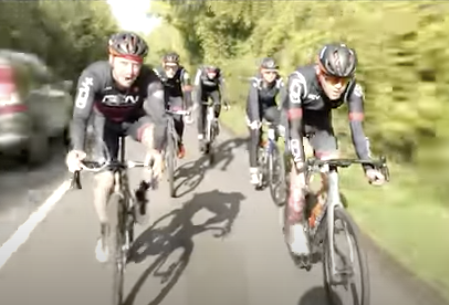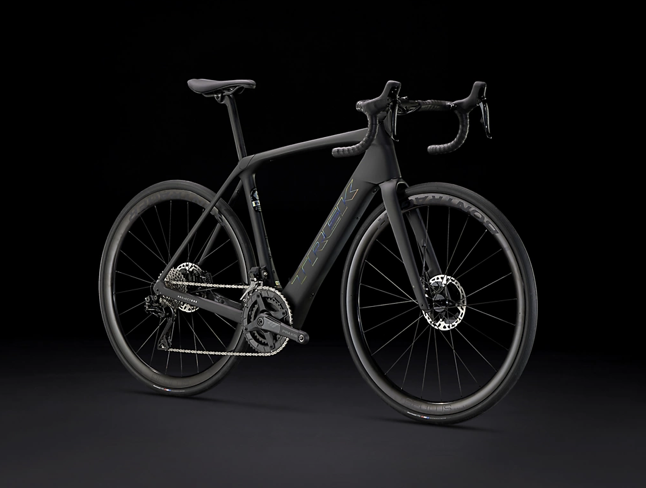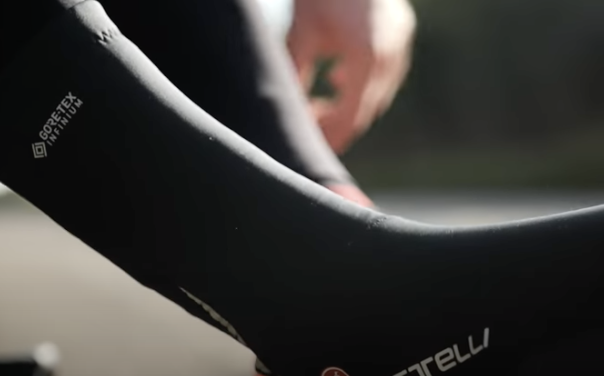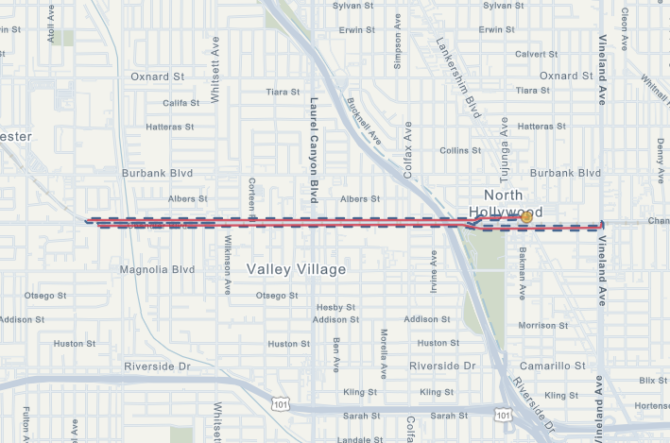When you get a puncture on a tubeless tyre it can be tempting to take the old tyre off and simply replace it with a new one. But it doesn’t have to be this way! Alex shows you how you can not only fix the puncture but also keep your tubeless tyres going like new!
From LA.Streetsblog.org
It’s the day after Election Day. Many races are too close to call, with no new L.A. County vote tallies expected until Friday, so how about interrupting your doom-scrolling for a brief update on a couple of Los Angeles City bike lane projects?
Ramirez/Center/Santa Fe bike lanes completed
A week ago, Streetsblog reported that preliminary striping was done for new bike lanes between Union Station and the Arts District. Now, the city Transportation Department (LADOT) has completed them.
They’re a couple blocks longer than what SBLA initially spotted; they extend one mile from Vignes Street (the back side of Union Station) to Mateo Street. That part of Mateo already has bike lanes that go the new Sixth Street Viaduct.
It’s the day after Election Day. Many races are too close to call, with no new L.A. County vote tallies expected until Friday, so how about interrupting your doom-scrolling for a brief update on a couple of Los Angeles City bike lane projects?
From CyclingSavvy.org
by
We are now in the time of short days and long nights, and so it’s a good time to talk about bicycle lights.
And there’s good news. Thanks to efficient light-emitting diodes (LEDs), bicycle lights can be bright while drawing meager power from a small battery or generator.
Even better news — they won’t draw all the cash out of your wallet.
Like the horsepower race…
The trend can go to excess. Some of today’s bicycle headlights have product names like “Atomic”, and I kid you not, “Blinder” — only too true. Brighter, brighter, brighter… 200, 400, 1000 lumens. (The lumen is a measure of light output.)
The lumen war reminds me of the mid-20th-century horsepower race among big American cars. As in “my car is better than yours because it has a V8 engine with more horsepower!”
Why beam pattern matters
Lumens count light in every direction, but it matters in which direction the light goes. Any bicycle headlight bright enough to light your way should have a special beam pattern, like a car headlight, for at least four reasons:
- Efficiency: There is no point in using electrical power to produce wasted light.
- Clarity: Light thrown upward illuminates dust, fog, mist, rain, snow — washing out the bicyclist’s view of the riding surface.
- Glare reduction: a headlight that spews light upward glares into the eyes of oncoming bicyclists, motorists and pedestrians. Stray light from a properly-designed headlight is still bright enough to reveal you.
- Even illumination: a well-designed, shaped headlight beam tapers down in brightness closer to the bicyclist, avoiding a hotspot.
Image courtesy of NiteRider
Autumn is a great time to ride your bike, its warm, often dry and not to mention the stunning autumnal scenery! Naturally a ride including some gravel is perfect for this time of year, but what we can’t agree on is the bike we should use! Alex and Si right are riding their full gravel bikes, whereas Manon and Ollie are toughing the rough stuff on their road bikes. And Hank, well he’s doing Hank things… Welcome to GCN’s Big Autumn Ride!
The best gravel wheelsets bring a lot to the table when you head off-road. Improving ride feel, traction and speed
The best gravel wheelsets can help transform the ride and performance of a gravel bike. There are multiple different gravel bike categories now, but whatever type of riding you are doing on your gravel bike a wheelset upgrade is one of the biggest purchases and upgrades you can make, so we are here to help you get it right.
During the gravel categories ascendancy before the equipment was as specific and well developed as it is now, even the best gravel bikes came with either road wheelsets that were really too narrow for wider tyres or cyclocross wheelsets that are built for a slightly different use case and tyre of riding. Now we have gravel specific everything, from the best gravel bike shoes through to the best gravel race bikes designed only to compete at the highest level.
Fast forward a few years and there is a broad spectrum of gravel-specific wheelsets to choose from in both 650b and 700c sizes. Current gravel wheelsets are lightweight but strong and wide enough to cope with off-road abuse and provide a far better fit for tyres (particularly tubeless ones) than in years gone by.
If you are still not too sure where to start when it comes to choosing a new wheelset we’ve got a useful guide at the bottom of the page to help you make the right decision for your type of riding.
From BikeRadar.com
By John Whitney
E-road bikes are one of the newest bike genres on the block.
Electric road bikes have the geometry of your race or endurance road bikes, they’re light enough to match up well to at least a heavier standard road bike and have power boosts that can be as heavy or as light as you want.
On the strongest setting, you can fly up a hill like Marco Pantani in his pomp. On the lightest setting, you still put out the work that you do on your road bike, it’s just that you’re now up front chatting with your friends and in fine spirits, not out at the back, spluttering expletives under your breath.
Recently, Cycling Plus magazine put out a call to hear our readers’ experiences of using e-road bikes.
Several told us their stories of how the new electric bikes have renewed motivation to ride in later years, kept crucial riding friendships alive, fought back against the tide of ill health and, ultimately, restored the fun that should be at the heart of riding a bike once age has begun to take its toll.
Mike Baczkowski – Florida
Mike Baczkowski has ridden bikes seriously, and ridden serious bikes, since his late 20s. Now 80, he recalls over the phone from his winter home in Florida of his penchant for fixing up old and abandoned bikes.
Forgotten treasures, such as a 1986 Raleigh Touring 14 bike that he rescued from the garbage, restored and took over to Italy to ride the original L’Eroica vintage bike event in Tuscany.
There’s also a 1980 Colnago Super that he’d put in the miles around his home in Hamburg, New York, close to Niagara Falls and the Canadian border; and the steel Bianchi that he was on in 2005 when he got wiped out by a motorist at an intersection on, ironically, Cycle to Work day, an incident that left him with a broken neck vertebra and a long convalescence.
He later become a belated, but ultimately enthusiastic, adopter of carbon, buying a 2014 Guerciotti Eureka in the bright orange stylings of the CCC pro team at the time.
“My friends kept insisting I get a carbon bike,” he says. “They were faster up the hills on their carbon racers – that was partly a weight thing, but also an age thing, they’re all at least 10 years younger than me.
Image courtesy of Trek
Riding your bike in the winter when the weather is cold can be great fun, but does take some planning to make sure you stay warm. Wearing gloves, layering up and stopping for cafe stops are among the things you can do to keep warm on the bike. Conor takes you through his top 6 tips for cycling in the cold!
When you arrive at LA Bike Fest, be prepared for a day of live music, delicious food, plenty of drinks, a community expo, a silent auction, and more!
Plus a HUGE announcement!
- Location: The Bike Shed Moto Co. 1580 Industrial St. Los Angeles, CA 90021
- Date: November 5, 2022
- Time: 12pm – 4pm
- General Admission: Access to the main floor and rest & recharge area which will include refreshments, entertainment by local artists and KCRW’s Chris Douridas, temporary tattoos, photo opportunities, nearby bike valet, activations led by local community-based organizations as well as larger brands, a silent auction, and giveaways.
- Millenium Lounge: Access to the main floor, rest & recharge area as well as a private loft to join other top fundraisers for exclusive beverages, treats, massages, exclusive giveaways, and bike valet right at the venue.
Please register all the people who will be attending this event, including children.
The Chandler Bicycle Connection will upgrade existing, 5’-wide bicycle lanes on Chandler Boulevard to protected bicycle lanes by adding physical barriers, such as bollards, in order to separate people traveling in the bike lane from moving vehicles. The goal of the project is to create a seamless, low-stress bicycle corridor for people of all ages and abilities by closing a current gap in the low-stress bikeway network between the existing Chandler Bikeway and the Orange Line Bike Path. (A low-stress bikeway is one that is comfortable for bicyclists of all ages and abilities, not just experienced riders.)
Once completed, the project will establish a continuous route of protected and off-street bikeways from Burbank to the Sepulveda Basin. The project right-of-way is exclusively located on-street and owned and operated by the City of Los Angeles. The project is consistent with the Mobility Plan, which designates Chandler Boulevard as a striped bike lane in the Tier 2 Bike Lane Network.
For the last month, six GCN employees, and many of you viewers, have been taking on a commuter challenge. The idea: ride to and from work every day for a month, to see if they could save money, get fitter and happier. Si and Manon caught up with our star volunteers Harriet, Steve, Alice, Harry, Allie & Kai to see how their month of commuting went!

